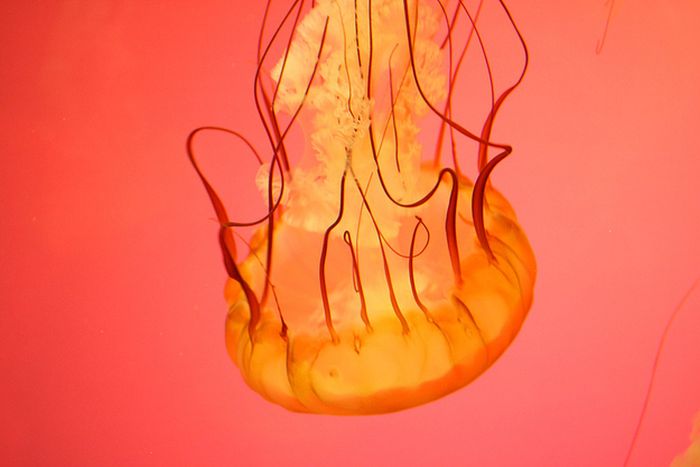|
|
Jellyfish
|
Anatomy
Jellyfish do not have specialized digestive, osmoregulatory, central nervous, respiratory, or circulatory systems. They digest using the gastrodermal lining of the gastrovascular cavity, where nutrients are absorbed. They do not need a respiratory system since their skin is thin enough that the body is oxygenated by diffusion. They have limited control over movement, but can use their hydrostatic skeleton to accomplish movement through contraction-pulsations of the bell-like body; some species actively swim most of the time, while others are passive much of the time. Jellyfish are composed of more than 90% water; most of their umbrella mass is a gelatinous material — the jelly — called mesoglea which is surrounded by two layers of epithelial cells which form the umbrella (top surface) and subumbrella (bottom surface) of the bell, or body.
A jellyfish does not have a brain or central nervous system, but rather has a loose network of nerves, located in the epidermis, which is called a "nerve net". A jellyfish detects various stimuli including the touch of other animals via this nerve net, which then transmits impulses both throughout the nerve net and around a circular nerve ring, through the rhopalial lappet, located at the rim of the jellyfish body, to other nerve cells. Some jellyfish also have ocelli: light-sensitive organs that do not form images but which can detect light, and are used to determine up from down, responding to sunlight shining on the water's surface. These are generally pigment spot ocelli, which have some cells (not all) pigmented.
|
|









